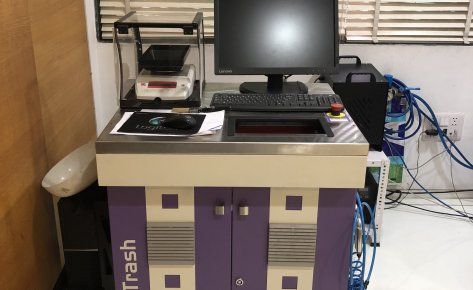For centuries Cotton has been used to make very fine lightweight cloth in areas with tropical climates. Some authorities claim that it was likely that the Egyptians had cotton as early as 12,000 BC, and evidence has been found of cotton in Mexican caves (cotton cloth and fragments of fibre interwoven with feathers and fur) which dated back to approximately 7,000 years. There is clear archaeological evidence that people in South America and India domesticated different species of cotton independently thousands of years ago.
The earliest written reference to cotton is in India. Cotton has been grown in India for more than three thousand years, and it is referred to in the Rig-Veda, written in 1500 BC. A thousand years later the great Greek historian Herodotus wrote about Indian cotton: “There are trees which grow wild there, the fruit of which is a wool exceeding in beauty and goodness that of sheep. The Indians make their clothes of this tree wool.” During the late medieval period, cotton became known as an imported fibre in northern Europe, without any knowledge of what it came from other than that it was a plant; people in the region, familiar only with animal fibres (wool from sheep) could only imagine that cotton must be produced by plant-borne sheep. John Mandeville, writing in 1350, stated as fact the now-preposterous belief: “There, in India grew, a wonderful tree which bore tiny lambs on the endes of its branches. These branches were so pliable that they bent down to allow the lambs to feed when they are hungrie.”. This aspect is retained in the name for cotton in many European languages, such as German Baumwolle, which translates as “tree wool.” By the end of the 16th century AD, cotton was cultivated throughout the warmer regions of Africa, Eurasia and America. The Indian cotton processing industry was eclipsed during the British Industrial Revolution, when the invention of the Spinning Jenny (1764) and Arkwrights spinning frame(1769) enabled cheap mass-production of cotton cloth in the UK. Production capacity was further improved by the invention of the cotton gin by Eli Whitney in 1793. In the United States, growing the three crops, cotton, indigo and tobacco historically were the leading occupations of slaves. After emancipation, the share cropping system evolved which in many cases differed little from the systems of slavery.
Cotton is the most famous textile material associated with the Indian Subcontinent. The export of fast dyed cotton cloth to Europe revolutionised the garment and furnishing fashions, agricultural practices and the textile manufacturing industries of the seventeenth and eighteenth centuries. Cotton has been cultivated within the Indian Subcontinent for the manufacture of textiles since 1750 BC, the date ascribed to the Mohenjodaro fragments of the Indus Valley Civilization. The perennial form of cotton plant is a slow growing and warmth and water demanding shrub. Its cultivation in the north was therefore limited. By the sixth or seventh century AD the more robust annual variety, Gossypium herbaceum, was grown in India. By the thirteenth century, its cultivation spread across the west and south-east Asia.
Our services are also best and straight like our policy. With the employees’ strength of 20, company has facility for the quality checking. A very well equipped HVI testing laboratory is available here in Ahmedabad, where skilled people are providing their services for quality and weighment checking. Company has strength in dealing raw Cotton quality S-6. Moreover having good experience in dealing cotton qualities like S-6, MECH-1 & J-34, Hygienic Cotton.
COTTON VARIETY |
MAJOR PRODUCING STATES |
FIBRE LEMGTH (MM) |
MICRONAIRE |
STRENGTH |
|
Y1 |
MAHARASHTRA |
22 TO 25 |
4.5 TO 5.5 |
18 TO 24 |
|
V – 797 |
GUJARAT |
22 TO 24 |
4.5 TO 5.5 |
18 TO 24 |
|
J – 34 |
HARYANA/RAJASTHAN/PUNJAB |
27 TO 28.5 |
3.6 TO 4.8 |
25 TO 29 |
|
SHANKAR – 6 |
GUJARAT |
28 TO 29.5 |
3.5 TO 4.9 |
26 TO 30 |
|
MECH – 1 |
MAHARASHTRA/MP |
28.5 TO 30 |
3.5 TO 4.9 |
26 TO 31 |
|
BUNNY BRAHMA |
MAHARASHTRA/MP/AP |
30 TO 31 |
3.4 TO 4 |
26 TO 32 |
|
MCU – 5 |
AP/TELANGANA |
31 TO 32 |
3.2 TO 3.8 |
26 TO 32 |





